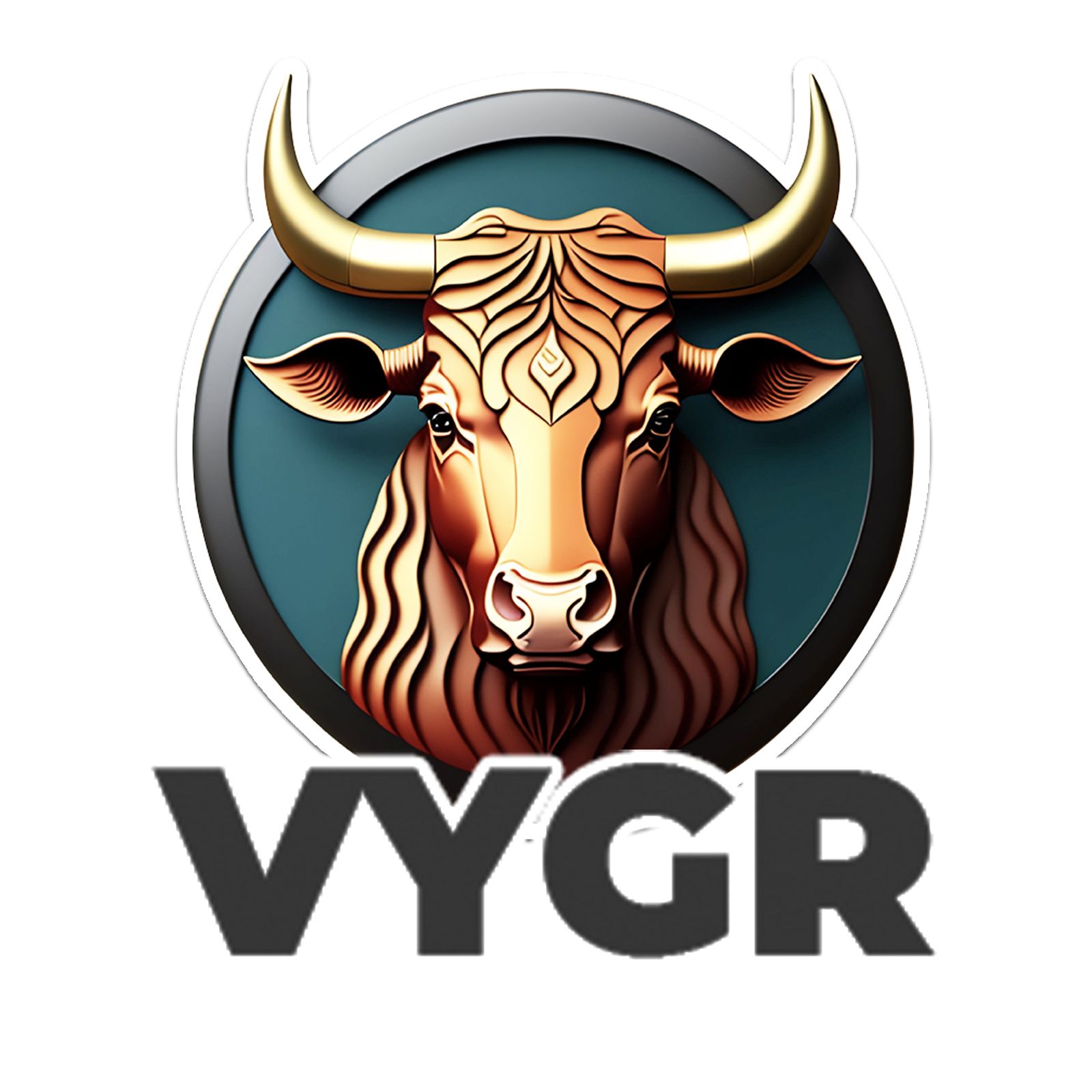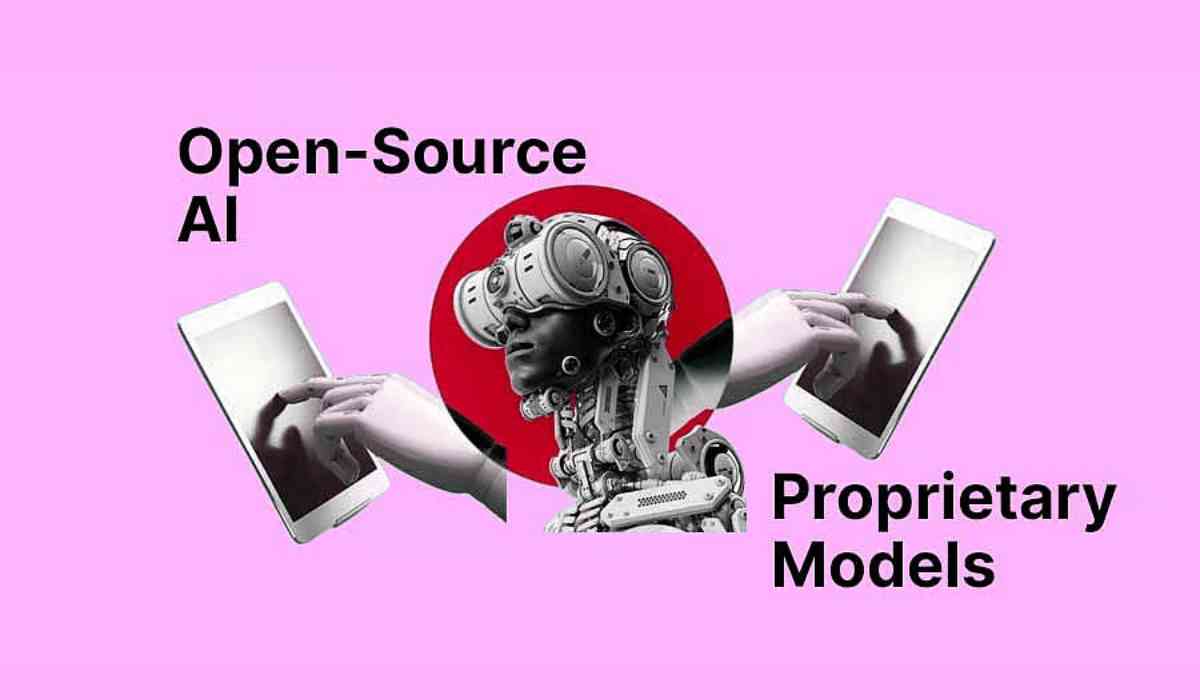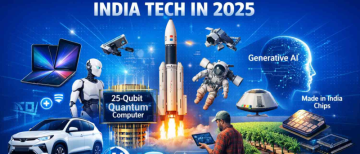Artificial intelligence (AI) is no longer a futuristic concept—it's a business imperative. From predictive analytics to generative AI, companies of all sizes are racing to adopt AI technologies to streamline operations, improve decision-making, and deliver better customer experiences.
Yet before diving headfirst into the AI pool, there's a crucial decision every enterprise must make: Should you go with open-source AI or proprietary AI? Or perhaps a combination of both?
This question isn't just technical, it’s strategic. It touches every corner of an organisation, from cost structure and scalability to innovation, compliance, and long-term viability.
Infact, some traders while trading on their cryptocurrency too use platforms like Balance Qyral for their work.
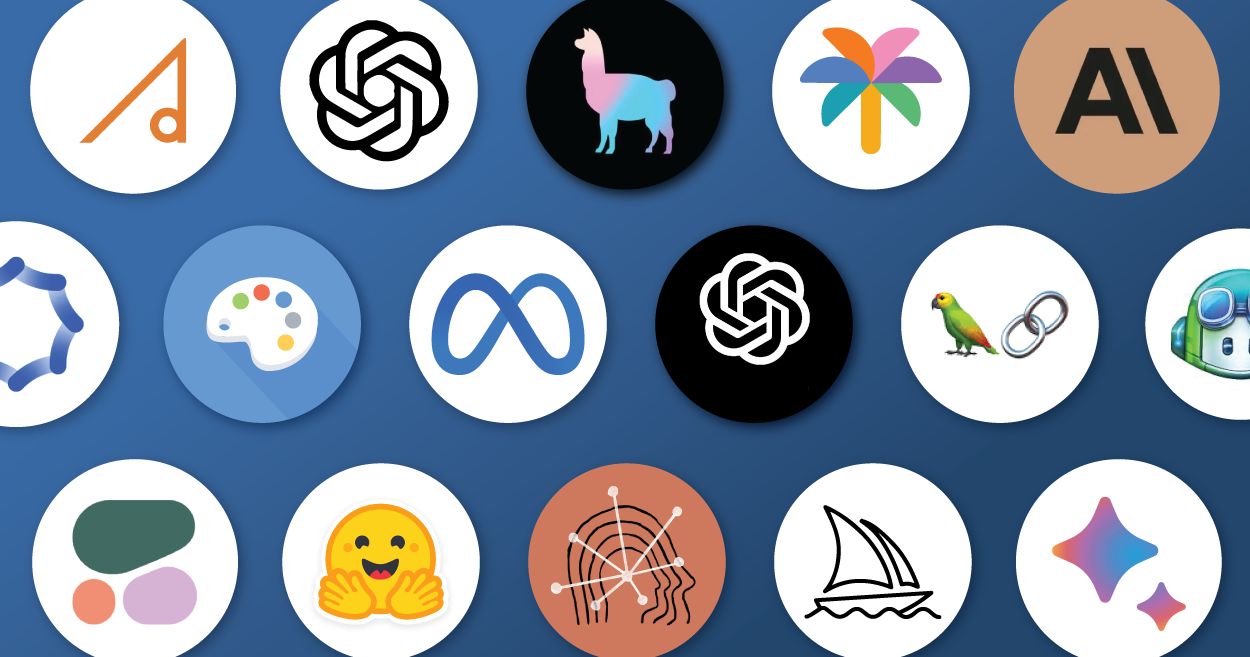
What Is Open-Source AI?
If you’ve ever used Linux, you already understand the ethos behind open-source AI. At its core, it’s about access, collaboration and transparency. Open-source AI refers to tools, models and algorithms that are publicly available. You can download them, tinker with the code, build on them, or even contribute your own improvements, no corporate permission slip required.
Key Characteristics of Open-Source AI
-
Transparency: Source code is available for public review.
-
Collaboration-driven: Contributions from global developers and researchers.
-
Customizable: Organizations can tailor models to their specific needs.
-
Lower entry costs: No licensing fees, though implementation can incur costs.
Notable open-source models include:
-
Meta’s LLaMA models
-
Mistral AI’s Mistral and Le Chat
-
Microsoft’s Phi models
-
DeepSeek’s V3 and R1
-
Falcon by the UAE’s Technology Innovation Institute
-
BigScience’s BLOOM
-
Eleuther AI’s GPT-NeoX and GPT-J

What Is Proprietary AI?
Proprietary AI, also known as closed-source AI, is software and models developed by private vendors. Access to the model's codebase and training data is restricted, and usage typically involves licensing fees or subscriptions.
These tools don’t give you access to the model’s inner workings. You’re paying for a finished product, and all the services that come with it.
Key Characteristics of Proprietary AI
-
Commercial ownership: Developed and maintained by companies.
-
Limited transparency: The model's inner workings are not exposed.
-
Ease of deployment: Often turnkey solutions ready for business use.
-
Premium support and compliance: Comes with enterprise-grade services.
Leading proprietary AI models include:
-
OpenAI’s GPT-4
-
Google’s Gemini
-
Anthropic’s Claude
-
Cohere’s Command R+
-
IBM’s watsonx
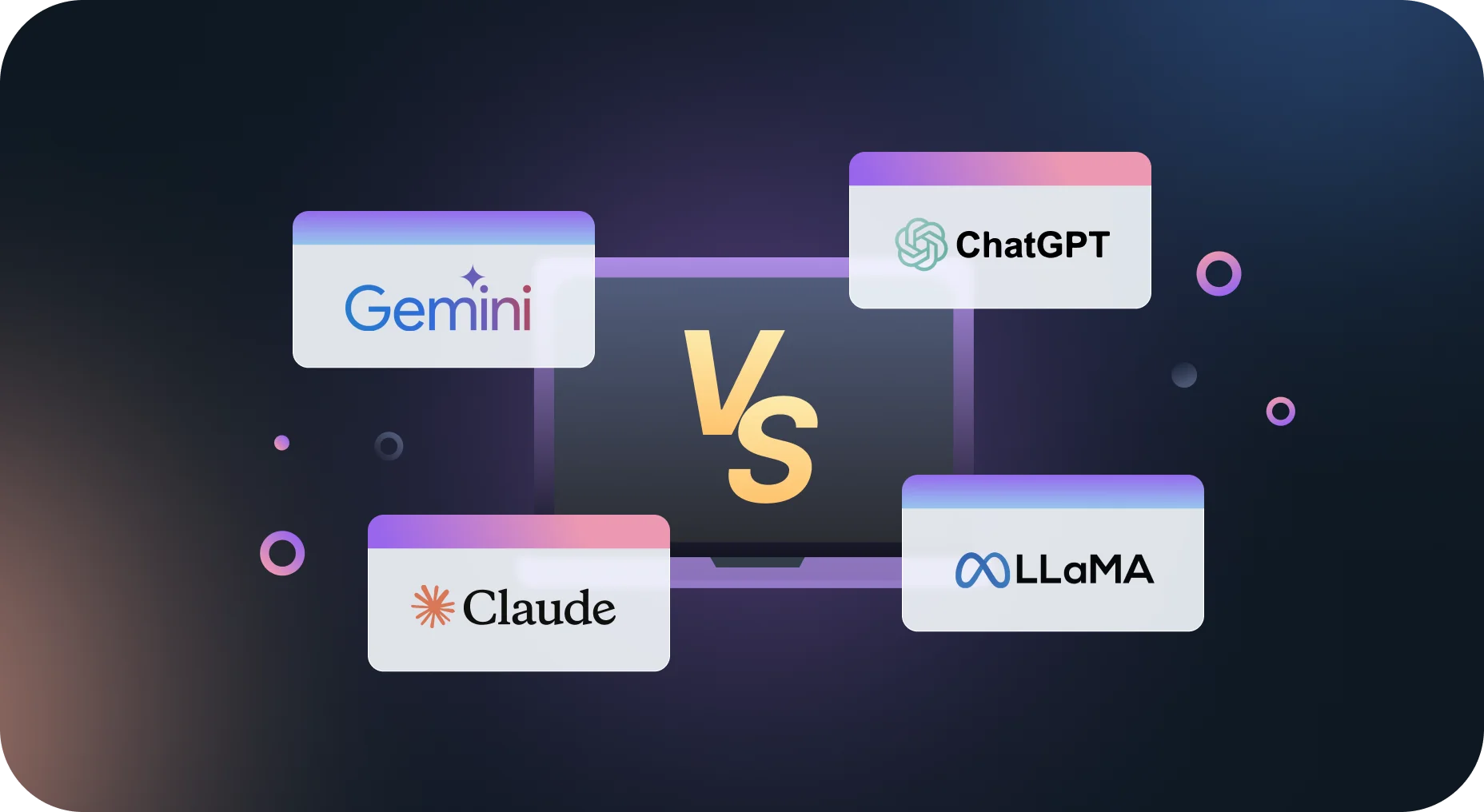
Open-Source vs. Proprietary AI: A Feature-by-Feature Comparison
Let’s dig into the core differences and trade-offs between these two approaches across several business-critical dimensions.
1. Customizability
-
Open Source: Full access to source code makes open-source AI inherently more customizable. Enterprises can tweak the architecture, add features, or train models with proprietary data. However, many open-source generative AI models do not include the original training data, which limits how deeply they can be modified unless retrained from scratch.
-
Proprietary: Offers limited customization. Most platforms allow for some configuration, especially through APIs, but you can't change the model’s core functionality. For companies with highly specific use cases, this could be a constraint.
2. Ease of Use
-
Open Source: Greater flexibility comes at the cost of complexity. Implementation usually requires a skilled technical team to set up infrastructure, integrate tools, and resolve issues. Organizations need in-house data scientists and AI engineers to make it work.
-
Proprietary: Turnkey solutions shine here. Proprietary AI is often bundled with popular enterprise software (e.g., Microsoft 365 or Google Workspace), making integration seamless. Minimal AI expertise is needed for deployment, which accelerates time to value.
3. Infrastructure Requirements
-
Open Source: Running open-source AI models, especially large language models (LLMs), often demands significant compute resources—GPUs, high storage capacity, and potentially specialized data centers. For on-premises deployments, this can mean a high initial capital outlay.
-
Proprietary: Most proprietary AI solutions are delivered via the cloud as managed services. This eliminates the need for expensive infrastructure and simplifies scalability. Enterprises pay to use the model rather than build and maintain it.
4. Cost Models and Total Cost of Ownership
-
Open Source: While these tools are typically free to download and use, costs emerge in the form of staffing, integration, security, maintenance, and computing power. Organizations with robust in-house technical talent may find this model more economical long-term, especially since there are no recurring license fees.
-
Proprietary: Comes with high upfront and ongoing costs, including licensing and usage fees that can scale with your business. However, the bundled services, support, and faster time-to-deployment can make these solutions appealing to enterprises looking for quick wins and lower integration overhead.
5. Security and Compliance
-
Open Source: Offers greater transparency, which allows organizations to audit the model and identify vulnerabilities. However, because it's publicly accessible, bad actors can also exploit it for malicious purposes. You’re responsible for implementing your own security protocols.
-
Proprietary: Typically comes with robust security protocols and built-in compliance with industry standards (GDPR, HIPAA, etc.). This makes it ideal for regulated industries such as healthcare, finance, and legal services.
6. Scalability and Performance
-
Open Source: Ideal for companies wanting to scale horizontally and tailor AI models to niche or evolving business needs. However, performance optimization is up to you—expect a steep learning curve.
-
Proprietary: Offers reliable, production-grade performance at scale, often optimized for enterprise workloads. Updates, optimizations, and bug fixes are handled by the vendor, reducing operational risk.
7. Innovation and Long-Term Viability
-
Open Source: The open nature of the community leads to faster iteration cycles, rapid innovation, and collaborative problem-solving. Think of it like Linux: once a hobbyist alternative, now a dominant platform.
-
Proprietary: Innovation depends on internal R&D teams. While many proprietary vendors lead the AI frontier today, their closed ecosystems might limit flexibility in the future. Vendor lock-in is a genuine concern—changing providers later could be costly and complex.
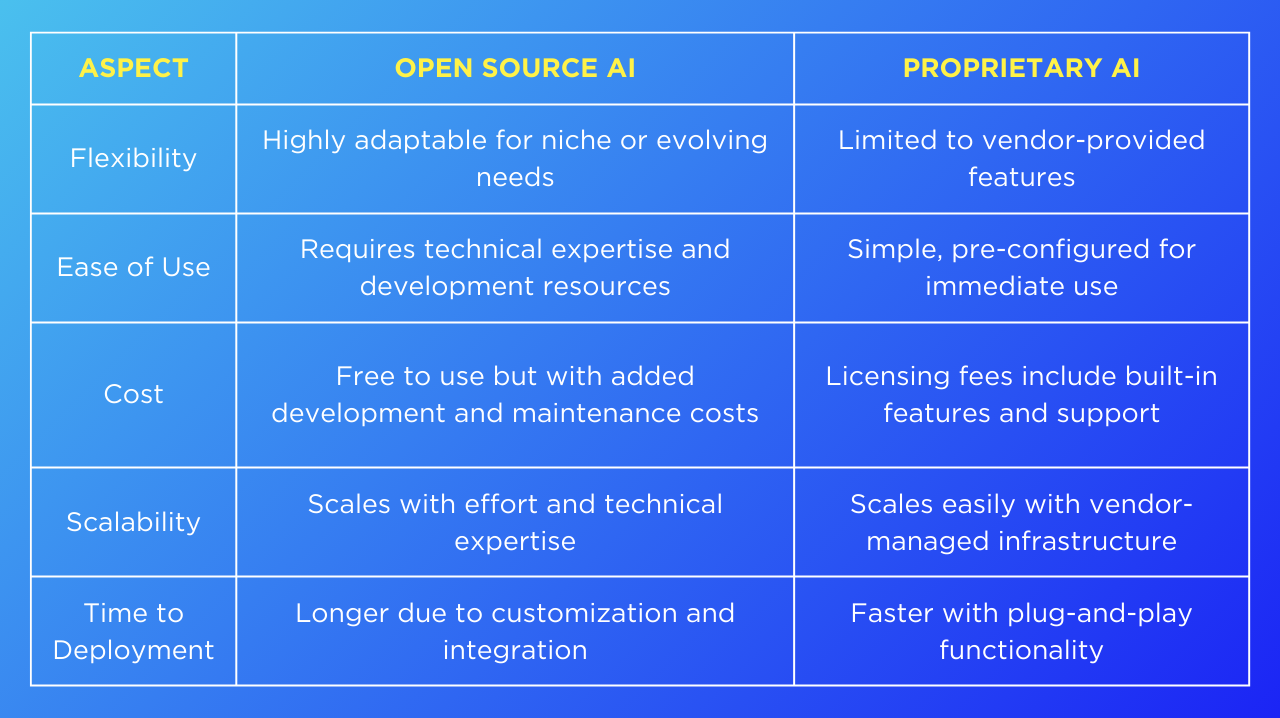
Real-World Use Cases: Where Each Model Excels
|
Use Case |
Best Fit |
Why |
|---|---|---|
|
Rapid deployment in productivity tools |
Proprietary |
Turnkey solutions and seamless integrations |
|
Custom LLMs trained on proprietary data |
Open Source |
Full control over training, architecture, and use |
|
High-security environments (finance, healthcare) |
Proprietary |
Enterprise-grade compliance and support |
|
AI experimentation and prototyping |
Open Source |
No licensing fees; community-driven improvements |
|
Industry-specific AI at scale |
Hybrid |
Leverage proprietary ease with open-source flexibility |
Making the Right Choice: Key Questions to Ask
To determine which path is right for your organization, consider the following:
-
Do we have in-house AI and DevOps expertise?
If yes, open source could save you money and offer long-term flexibility. If not, proprietary might be the better short-term option. -
What are our AI use cases?
Simple use cases (like automating customer support or drafting content) can often be met with off-the-shelf proprietary tools. Complex needs may require open-source customization. -
Do we need access to the training data?
Open source might provide the model but not the training data—important for interpretability and retraining. -
What are our governance and compliance requirements?
Highly regulated industries may require proprietary platforms that offer proven compliance capabilities—or custom open-source setups that meet specific legal frameworks. -
What are our long-term goals?
For companies looking to build enduring AI capabilities that won’t be disrupted by vendor acquisitions or policy changes, open source often represents the safer long-term bet.
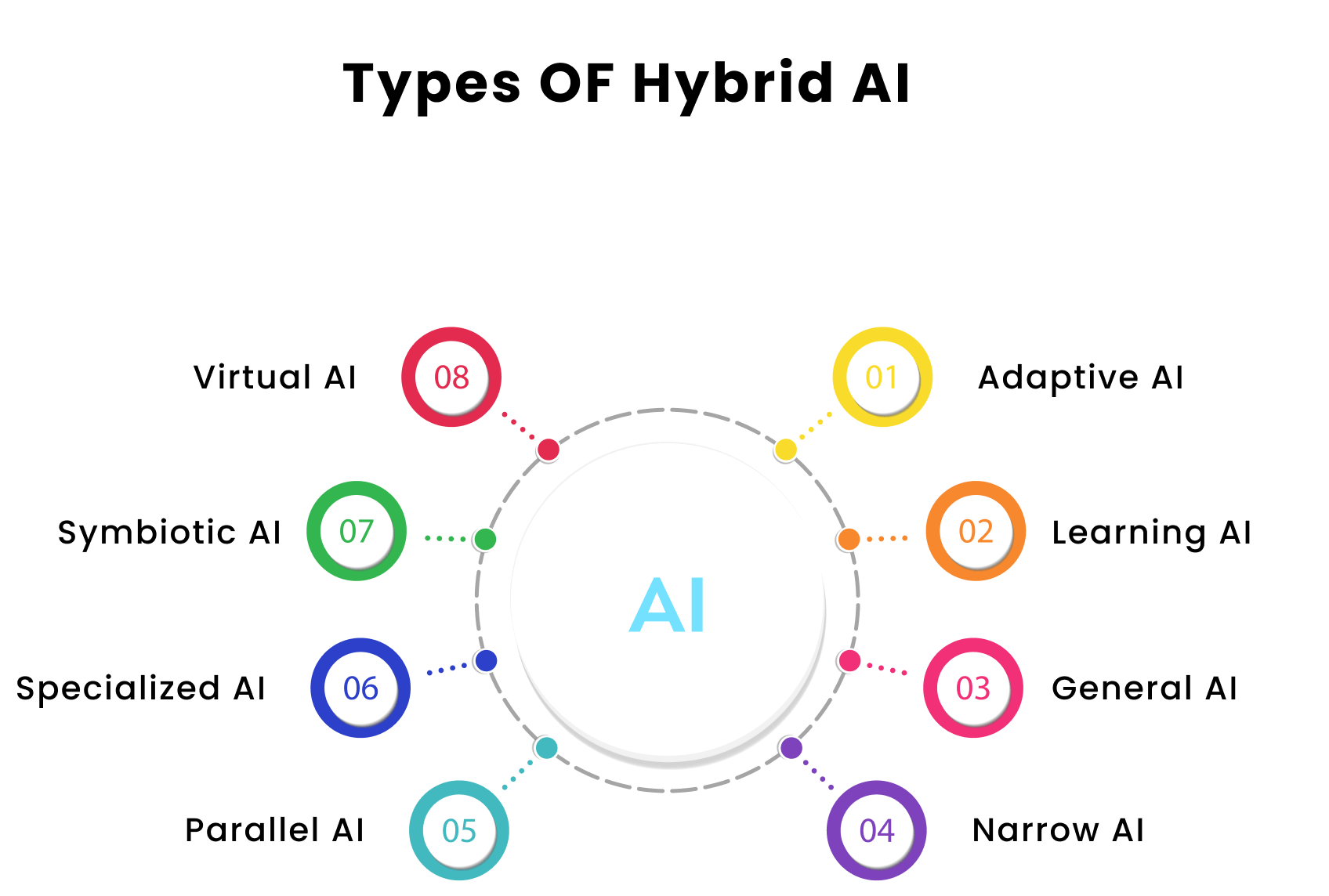
A Hybrid Approach: The Best of Both Worlds?
Increasingly, enterprises are adopting a hybrid strategy—starting with proprietary models for ease and speed, then moving to open-source AI for customization and cost-efficiency at scale. As Gadi Singer of Intel Labs suggests:
“For most enterprise deployments, it makes sense to initially use proprietary models to learn about AI’s potential... But for sustained deployment, companies often use ecosystem-based open-source targeted solutions, offering cost-effective adaptability.”
It’s Not Either/Or—It’s Strategic Alignment
The debate between open-source and proprietary AI isn’t about which is universally better. It’s about which aligns best with your organization’s goals, capabilities, and constraints.
-
Choose proprietary AI for fast, secure, supported solutions that plug into your existing workflows.
-
Choose open-source AI for long-term flexibility, innovation, and independence.
-
Choose both, if you want to be future-proof.
With AI evolving at breakneck speed, the smartest strategy is not just to adopt AI—but to do so intelligently, with foresight and adaptability. Whichever route you choose, the key is to start with clarity, invest in the right talent, and plan for growth beyond the hype.
Because in the world of AI, the only certainty is change.
With inputs from agencies. Links in the above article may be sponsored and user discretion is advised.
Image Source: Multiple agencies
© Copyright 2025. All Rights Reserved Powered by Vygr Media.
